The organizers never made overt racial arguments, but they were reacting to a system set up by a 1971 desegregation order to create more racial balance. They said their schools were already overcrowded and underfunded, so why should they bus in other kids who weren’t part of their community?
On a Facebook page to discuss the school district secession, one of the organizers wrote that it would give them "better control over the geographic composition of the student body.” They were hinting at their dismay that students from a mostly black neighborhood were being bused to their mostly white schools.
“Those students do not contribute financially,” one organizer wrote. “They consume the resources of our schools, our teachers and our resident students, then go home.”
The organizer also wrote: “A look around at our community sporting events, our churches are great snapshots of our community. A look into our schools, and you’ll see something totally different.”
Here’s what they hinted at — what everyone knew but was never articulated: They were carving out a more affluent, more white area and starting their own school district with it. Here’s how those demographics broke down:
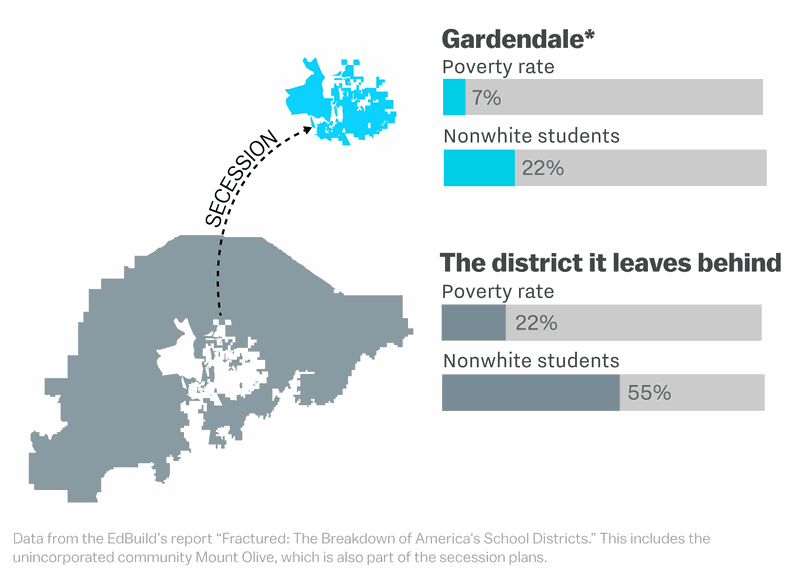
Eight other communities — yes, eight — had previously seceded from the Jefferson County school district, all for very similar reasons. They didn’t want to be subject to racial integration orders that involved busing, and they didn’t want to share tax dollars with people who were less fortunate.
In the South, most school districts are drawn along county borders. But here’s what these secessions did to this district:
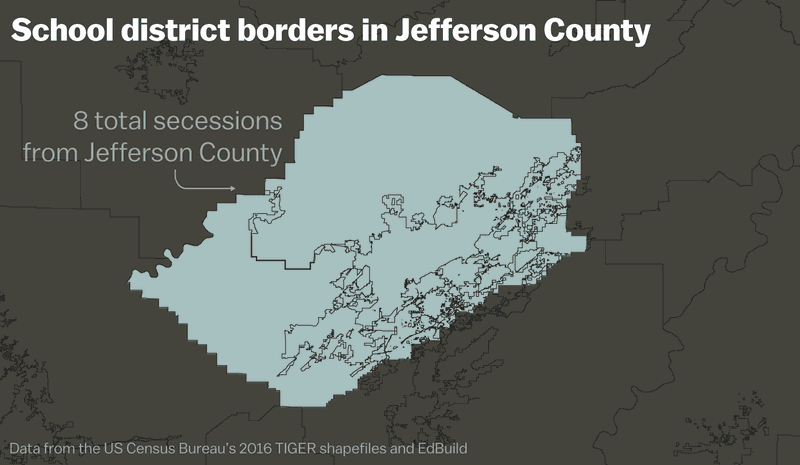
"I swear, I thought there was something wrong with the pixelation of borders," said Rebecca Sibilia, who led a team at EdBuild to study school secession.
And it’s not just Jefferson County. Since 2000, 70 other communities have tried to secede from their district, according to the recent EdBuild report.
Two-thirds of those of those secession attempts have been successful, and most of the other cases are still ongoing. Sibilia points out that some of these secession efforts are logical, like the one in California’s San Fernando Valley. But many of the proposed school borders are along socioeconomic lines, and they would further isolate poor children in segregated schools.
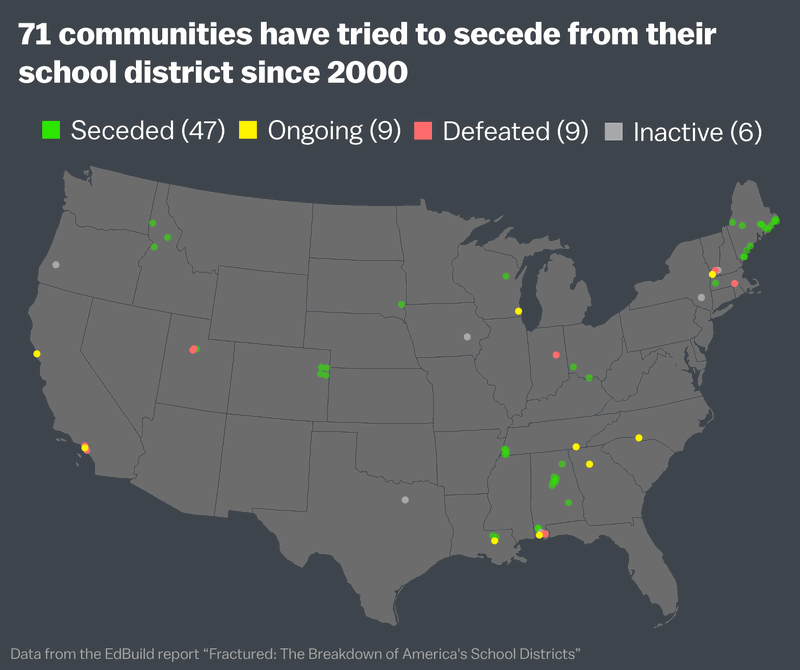
This is perhaps the most brazen modern example of privileged groups using borders to separate themselves from other people.
"It's a more concrete example of the 'Make America Great Again' ethos," said Erika Wilson, a law professor at the University of North Carolina Chapel Hill who has written extensively on the topic. "I call it a form of destructive localism. People who are fortunate enough to form utopias do so on the backs of other folks who have been excluded."
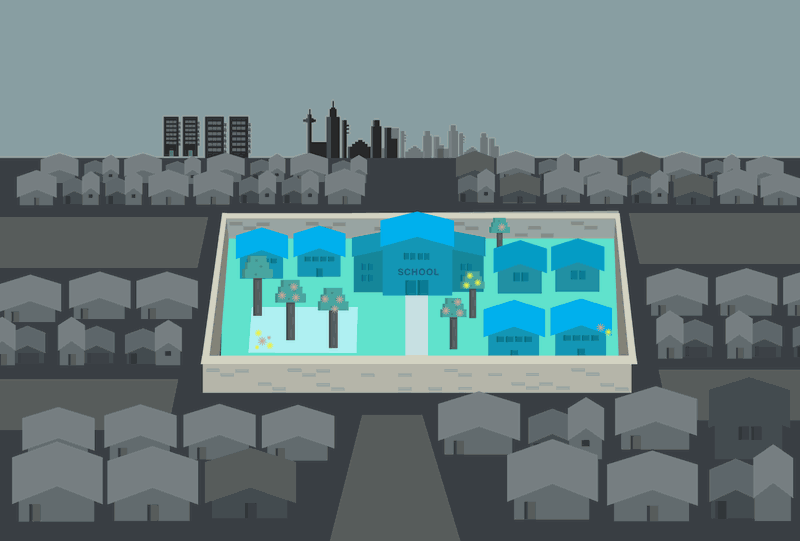
But this isn’t just a failure of people — of their unwillingness to honor a social contract with a larger community, regardless of their fortunes.
This is also a failure of the courts and our state legislatures.
They have created a system that incentivizes middle-class people to use their moderate wealth to wall in opportunities for their own kids, while depriving the kids of others. They’ve allowed parents, acting in self-interest, to create school systems that reproduce, or even exacerbate, the structural inequality we see today.
This is built on state-sponsored blueprints for segregation
In the 1940s, the federal government started backing home loans to white people but refused them to black people — and even those who wanted to live around black people.
This created segregated city neighborhoods.
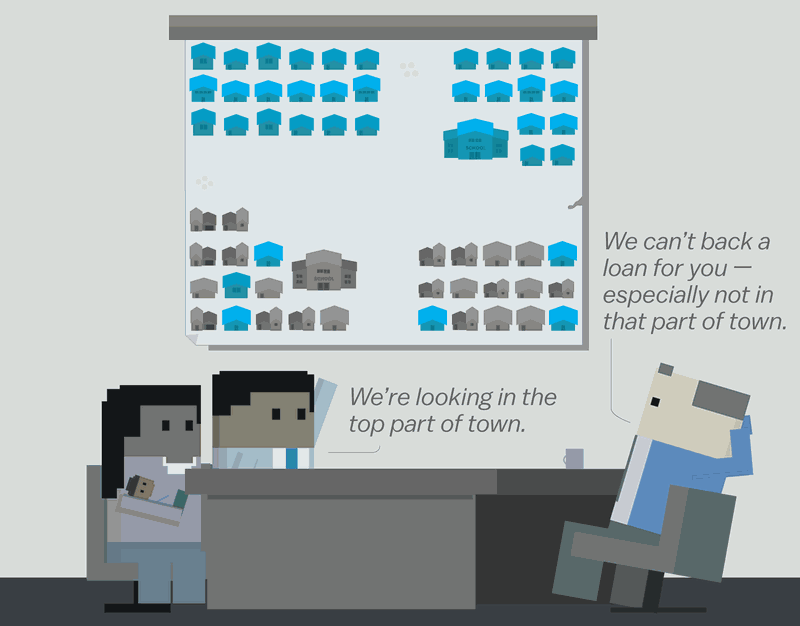
This is commonly repeated when talking about residential segregation. But in his new book The Color of Law, Richard Rothstein points out that the feds also backed development loans for suburban communities — as long as none of the homes were sold to black people.
This created segregated white suburbs.
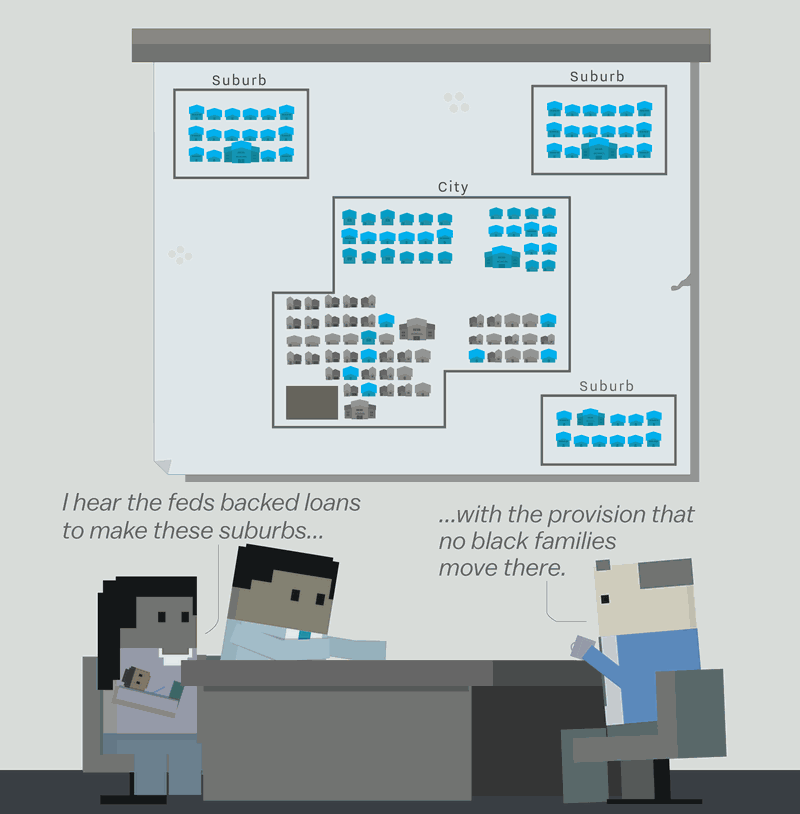
So by the time the Supreme Court integrated schools in the 1954 case Brown v. Board of Education, white families who didn't want their kids to go to school with black children had a very clear opt-out choice: the suburbs.
And they took the option.
Below is a chart showing how many white students were expected to leave a district — and how many white students actually left, once integration orders were put in place. Even in the years before desegregation started, white families started to leave at alarmingly high rates:
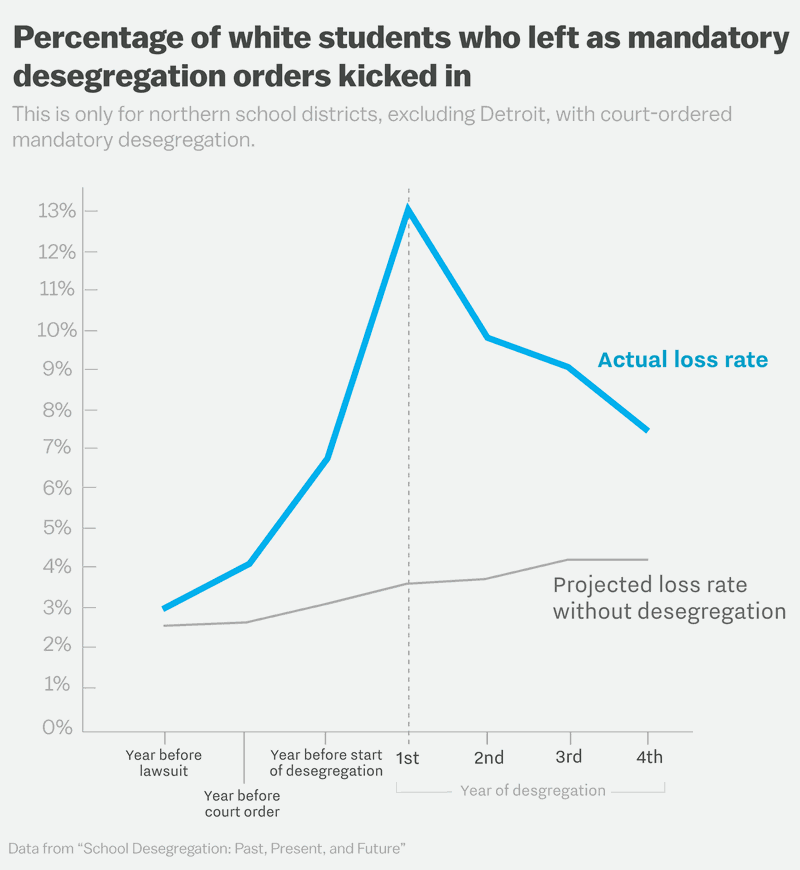
"How might a group deploy boundaries — and the law and policy around that — to remove themselves from having to share their resources from disfavored others?" LSU law professor Chris Tyson said. "That is the story of suburbanization."
Tyson, who has written on this topic, says we take urban sprawl as a rational choice by individuals who desire bigger houses, car dependence, strip malls, and highways. But that ignores the government policies that prop up these decisions.
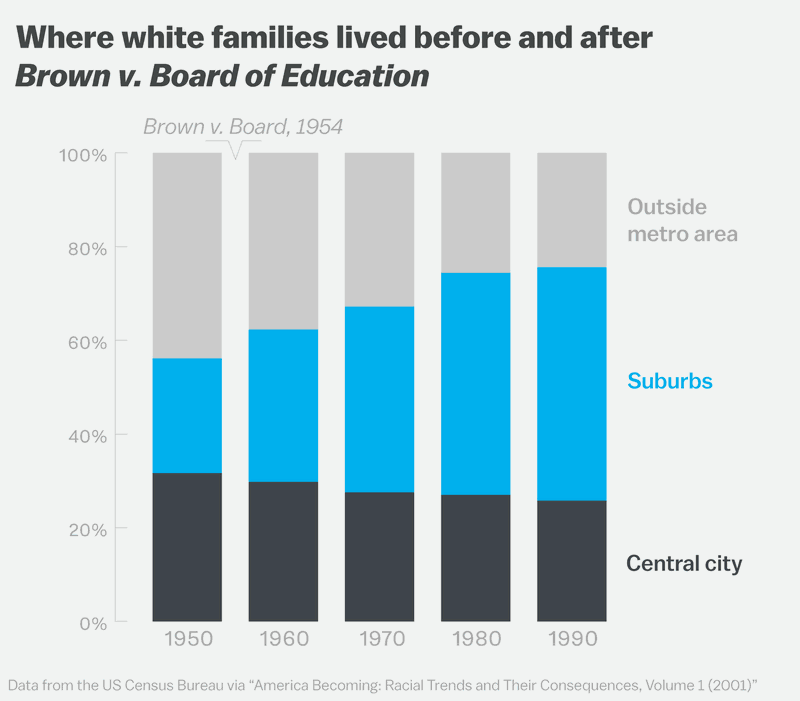
Fast-forward a few generations and we now have good schools that tend to be in the suburbs and bad schools that tend to be in central cities, and they track along racial lines. Tyson says it’s easy to think this is the way things are supposed to be, without tracing it back to its racist roots.
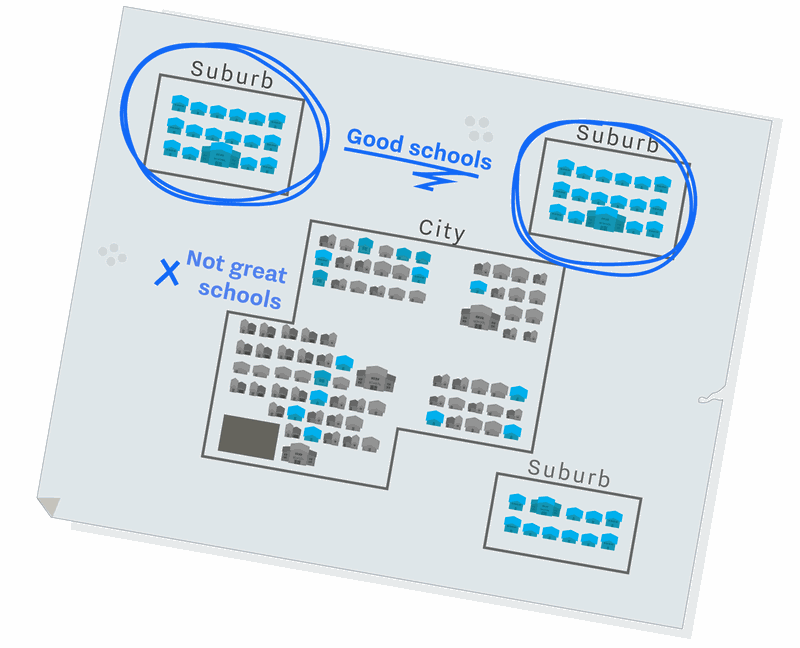
And even in the cities, white families were able to segregate themselves using borders.
For example, the Detroit school board split attendance zones into a north and south zone — even though they knew it would further segregate schools.

So in order to tear down these segregating walls, we needed a legal tool to help implement meaningful integration.
This tool needed to make sure white families couldn’t merely move to the other side of a border, or create new borders, to opt out of a social contract with people who are less fortunate.
How the Supreme Court built on the discriminatory blueprint
In 1970, the Detroit school board tried to ameliorate the city’s segregated schools.
Four of the six school board members voted for a plan that would bus high school kids from one zone to the other, and vice versa, to create more racial balance.
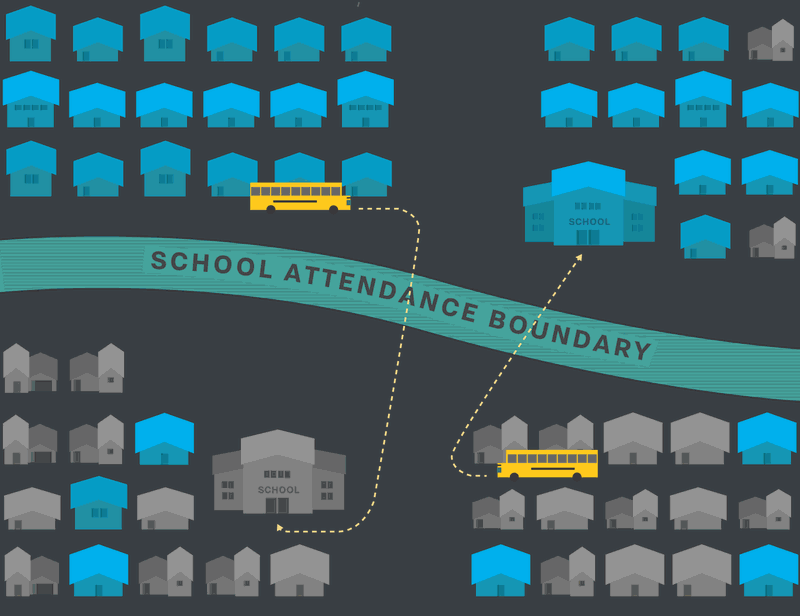
This led to bomb threats, protests, and recall elections for the four school board members who voted for this plan. Ultimately, the Michigan state legislature blocked the plan from going forward.
It took a federal judge to nullify the state legislature's actions and allow the high school busing plans to go further.
Still, there was a problem with this integration plan: Even with busing, white families who didn't want to integrate could just use the city borders to wall themselves off from black families.
In short, they could move to the suburbs.
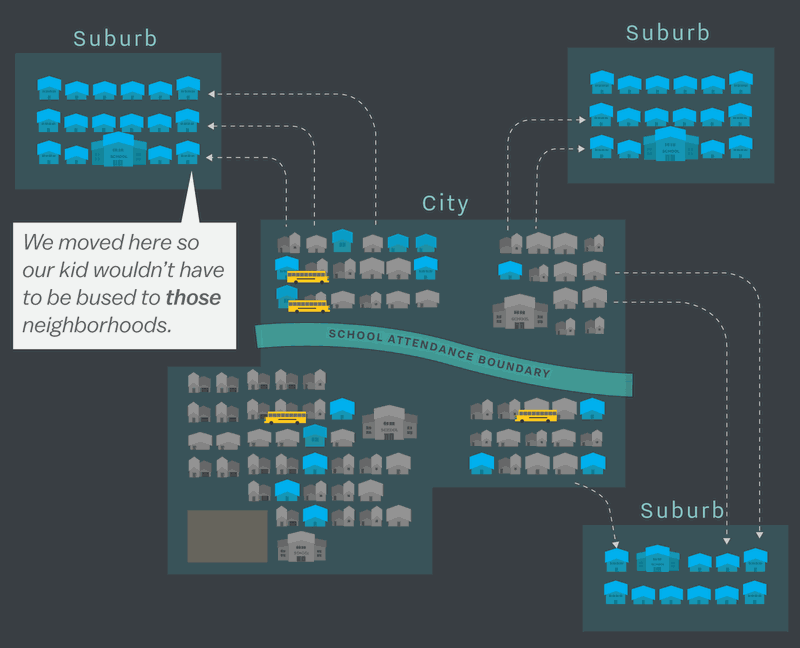
So the NAACP pitched a bold plan to remedy the increase in white flight. It wanted to require white students in the surrounding suburbs to be bused into Detroit, and black children in Detroit to be bused out to the suburbs.
This way, it would much be harder for white families to use borders to escape integrated schools.
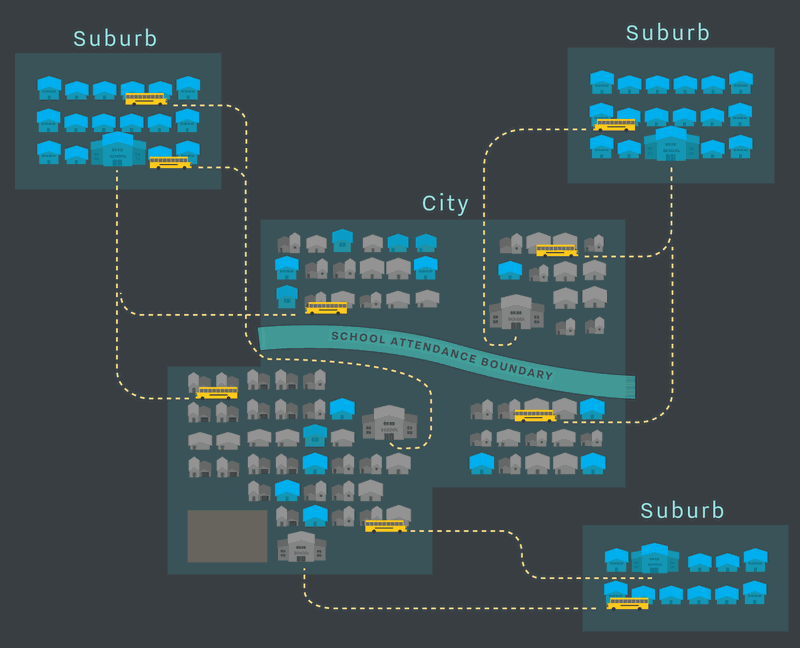
This plan, which was approved by a federal judge, created a massive uproar and eventually made it to the Supreme Court in the 1974 case Milliken v. Bradley.
On one hand, the Court found that the City of Detroit was responsible for violating the constitutional rights of black children.
But here’s the important part: It blocked the interdistrict busing plan. The Court said that unless the district lines were drawn with racist intent, the suburban districts did not have to integrate among each other or with Detroit.
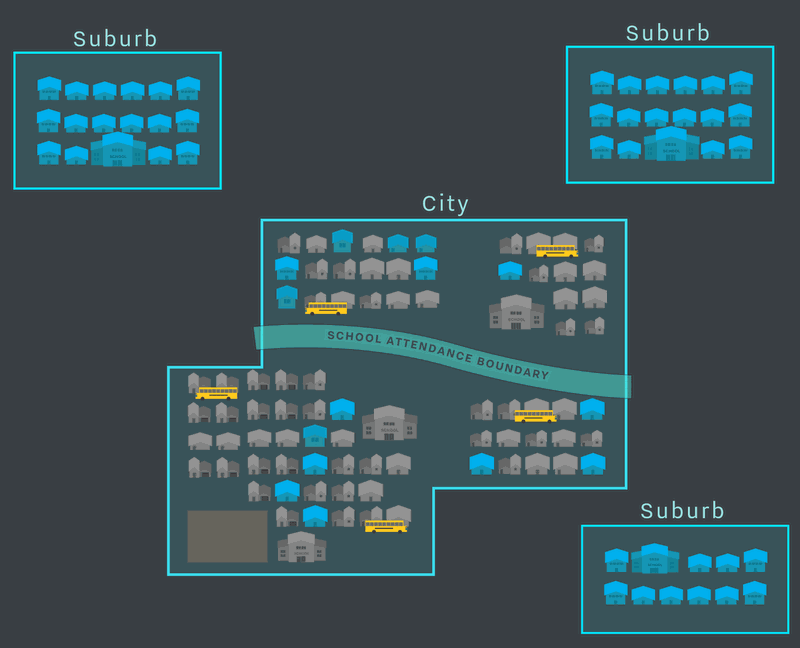
In the majority opinion, Chief Justice Warren Burger justified the decision by writing about the importance of local control of schools. He wrote that it gave individuals the power to make decisions and cater their schools to fit local needs.
So if you wanted to keep your kids away from poor black kids, you could just cross the border to a mostly white suburb.
Or you could figure out how to create a new school district and draw the border to wall them out.
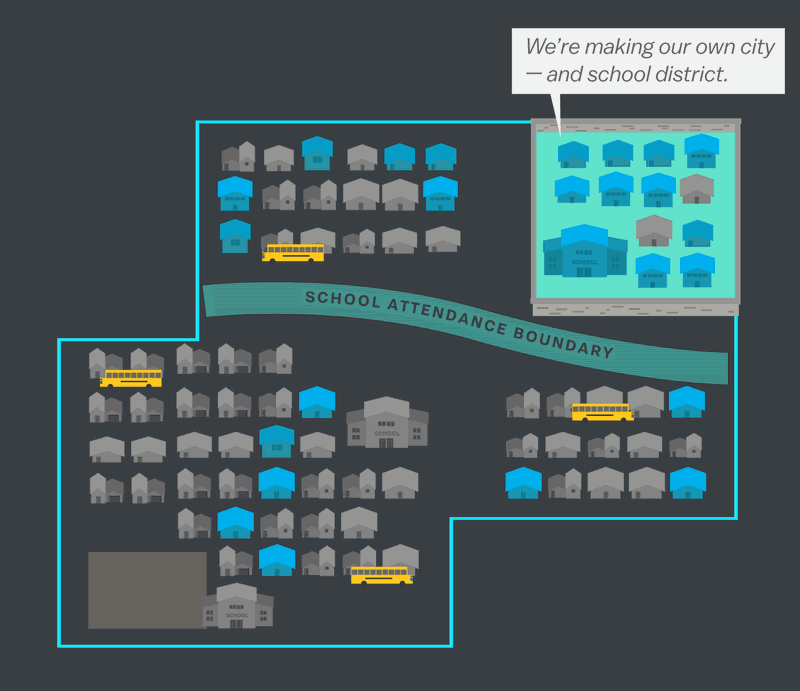
In his dissent, Justice Thurgood Marshall wrote:
School district lines, however innocently drawn, will surely be perceived as fences to separate the races when, under a Detroit-only decree, white parents withdraw their children from the Detroit city schools and move to the suburbs in order to continue them in all-white schools.
The breach of those fences, and the new ones that went up
In the past few decades, people of color have started passing through some of those barriers and moving to the suburbs — sometimes in large enough numbers to create what sociologists call "ethnoburbs."
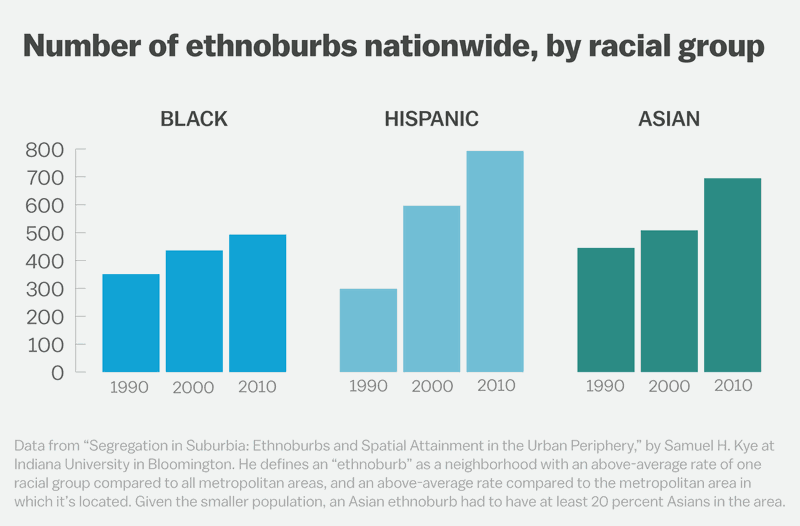
In response, some white families are moving even farther out into exurbs, or withdrawing from the public schools into which they are zoned by using either charter schools or private schools — both of which have helped create more segregated schools.
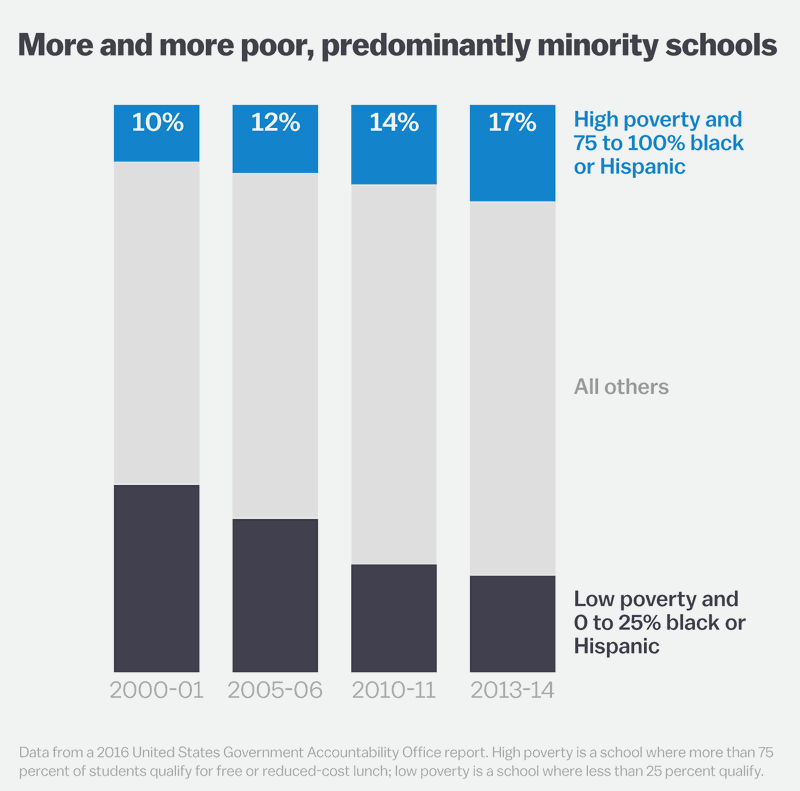
But many middle-class families don't have the resources to opt out.
So if you can’t move to the other side of the wall, another option is to put up new walls — to carve out borders with other middle-class families so you don’t need to share with the neediest children, who tend to be more expensive.
And for parents trying to do everything to help their kid get into a better situation, this is an existing road map, formed by the ridges of judicial and legislative decisions.

While Milliken v. Bradley created the legal framework that allows school secession to occur, Sibilia says it's the structure of school funding that creates the incentive.
A huge chunk of school funding comes from local property taxes, instead of being a centralized pot of money at the state level.
It creates this incentive for homeowners to band together with other better-to-do people, fence in that wealth, and use that money to improve only their schools. That, in turn, could increase their property values.
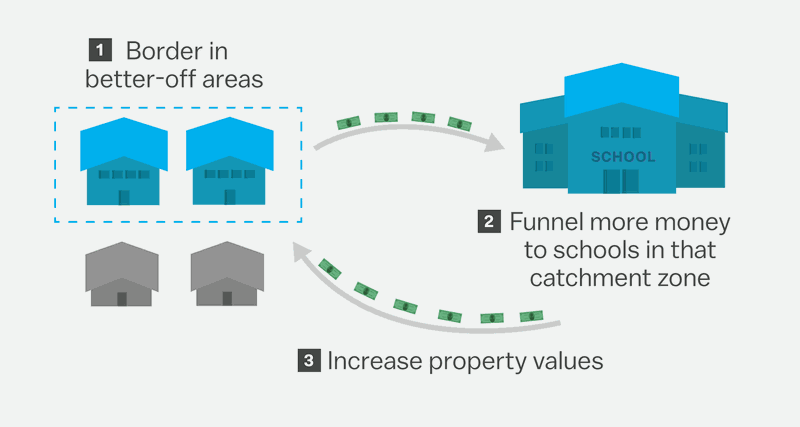
The counterargument is often the Jeffersonian idea of localism — that we function better in smaller communities that people form with like-minded people. But UNC’s Wilson says this defense is often used destructively to exclude others.
And it ignores the discriminatory policies that forced people into certain geographies.
"Many communities are formed not a result of voluntary choice but exclusion," she said.
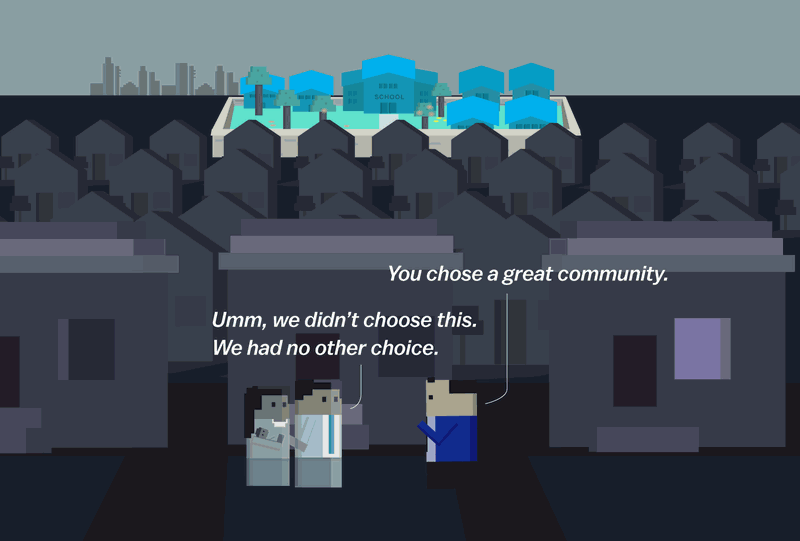
Wilson, who is black, knows firsthand the importance of softening these borders. She grew up in Las Vegas — the "most segregated town west of Mississippi" — and because the city is under a federal desegregation order, she was able to be bused to a magnet school as a kid.
"If it weren't for being able to escape my school attendance boundary lines," she said, "I do question what would've been my future."
“These schools are not yours, and you are not welcome here”
Back in Gardendale, Alabama, federal judge Madeline Haikala oversaw the case of whether the city could create its own district — and she didn’t mince words in describing what she saw.
"These citizens prefer a predominantly white city," she wrote in April, after reviewing the public comments from organizers.
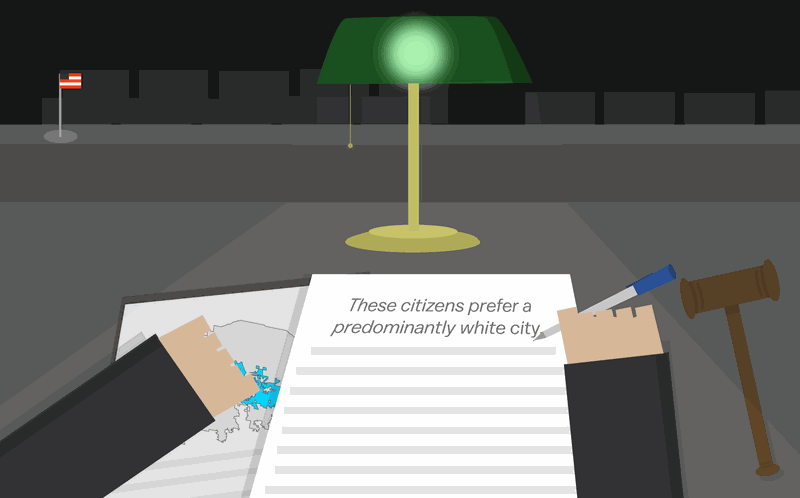
This gave the plaintiffs some hope, despite all the successful secessions from Jefferson County in the past.
In the previous school secession cases, the judge didn't go as far as to find racial motives, or even dig very far. But in this case, Judge Haikala said the organizers’ rhetoric communicated to black students that "these schools are not yours, and you are not welcome here."

She hit on a theme that was present in all of these fights over borders: this implication that some people inherently belong in this collective group — to make decisions, share resources, and add value to the community — and that other people hold them back.
"They certainly believe having the black kids in their schools undermines their kids’ education," Tyson, the LSU professor, said.

But in her ruling, Judge Haikala still allowed Gardendale and its mostly white residents to secede from the Jefferson County District, as long as they followed a three-year desegregation plan.
Later, she justified her decision by saying that denying the secession wasn't an "appropriate way to resolve this dispute." She added:
And isn't it possible that these children and their parents will do more to cure the despicable societal malignancy of racism than an order that drives a wedge in a community and creates new resentments?
The new Gardendale district had initially planned to launch the 2017-’18 school years with two elementary schools within its borders. But in late May, when the plaintiffs said they would appeal the decision to an appellate court, Haikala delayed the formation of the new district.
By that point, the Facebook page to organize the secession had grown mostly quiet. But some people were still unhappy that Haikala had put conditions on secession in Gardendale. In fact, one man on the Facebook page said he was glad he had decided to homeschool his daughter.
The group's organizer responded: "The less local education becomes, the more sense it will make to folks."
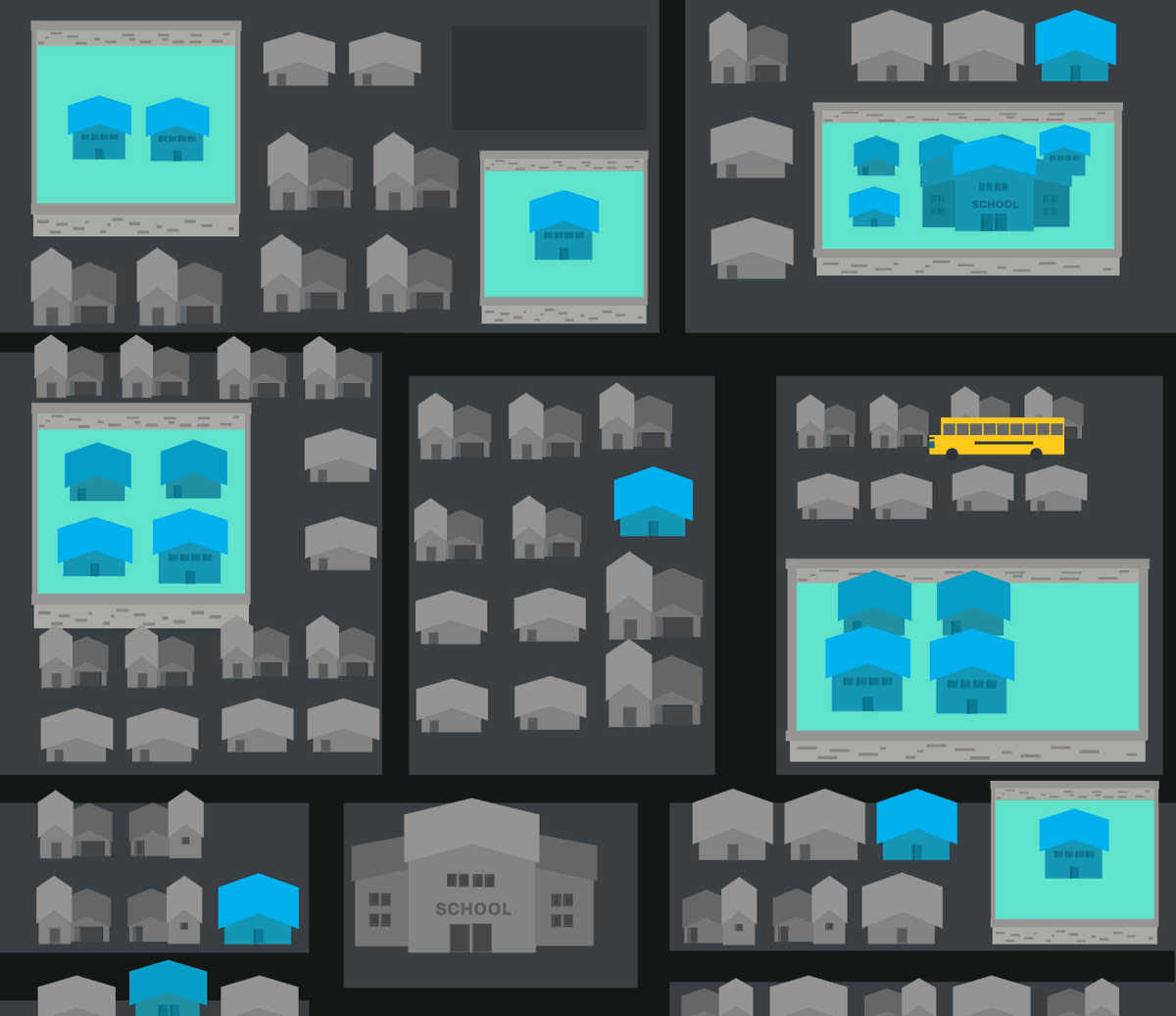


Spread the word